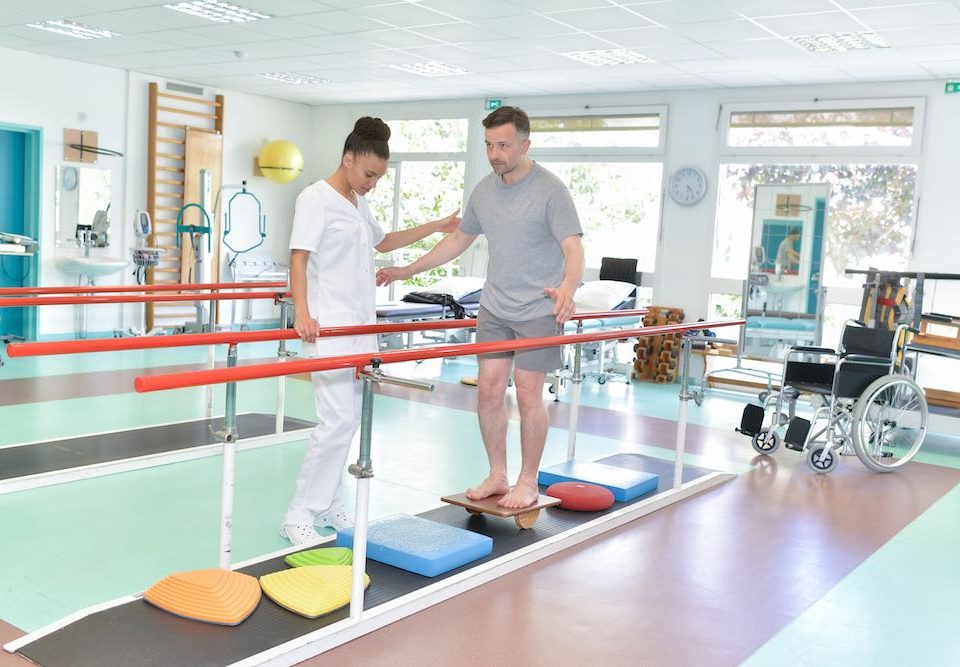
Physical Therapy for Orthopaedic Recovery
September 29, 2017
In Office Fracture Care: Avoid The Emergency Room
June 29, 2022Keep Your Hands Happy with Carpal Tunnel Tips

In today’s 24/7 world of constant connectivity, it seems like we are always working. Many of us spend hours each day on devices meant to help us be more productive, and those hours spent working can sometimes lead to some odd symptoms. First, you may notice some tingling in your hands, which can turn into a burning sensation. Maybe it feels like someone suddenly shocked you in the hand or wrist, possibly followed by sudden weakness. Picking things up becomes difficult – it’s almost as though you have no more strength left in your hands.
If you are experiencing the above symptoms, it is possible that carpal tunnel syndrome (CTS) is the cause.
What Causes Carpal Tunnel Syndrome?
The human hand and wrist is an amazingly delicate yet resilient system. Think about how often we use our hands, and how all those tiny bones and tendons work together to allow us to complete minute movements. The doorway to your hand is called the carpal tunnel. This pathway guides the median nerve and nine flexor tendons to your hands, allowing you to control your fingers and feel what you are touching.
Over time, repetitive motions, injury, genetics, or a combination of factors can cause pressure on the carpal tunnel, which in turn puts pressure on the median nerve and tendons. This force is what causes the pain and weakness associated with CTS.
Is it Preventable?
There are things patients can do to better their chances of remaining CTS-free, but the syndrome isn’t always preventable. Genetics can play a role in the development of CTS, and it can run in families; however, there are ways to prevent symptoms from becoming debilitating.
If you are worried about developing carpal tunnel syndrome, refer to the following tips to increase your chances of keeping the condition at bay:
Exercise and Stretch Your Arm, Wrist, and Hands
Like every other part of your body, your arms, wrists, and hands will benefit from regular exercise. When these areas are in good physical health, it can help to prevent injuries and swelling that could lead to CTS.
Stretching daily will also help to relieve stress in your hands and wrists, preventing them from becoming too tense during activity. For a list of stretches that are great for those experiencing CTS, click here.
Watch Out for Repetitive Motions
When we hear the term “carpal tunnel syndrome,” many of us immediately think of computers and too much time spent working at the keyboard. It’s true that typing can aggravate CTS, but any repetitive activities involving the hands and wrists can be potentially damaging. Hair stylists, musicians, factory workers, cake decorators, dentists, knitters…anyone working in a profession or participating in a hobby requiring repetitive hand movements can find themselves at risk for CTS.
One of the best ways to handle daily repetitive activity is just to take a break. Give your hands and wrists a few moments throughout the day to rest and relax before going back to work.
Take a Tech Break
Have you ever spent an extended amount of time texting a friend, only to find your fingers feeling a bit stiff? Our devices, while helpful for communicating with the world, are brutal on our hands. Constant use of a computer, tablet, or smartphone can contribute to CTS.
If you are a techie, it’s best to find some time in your day to put the devices down and give your hands a break. The end of the day may be a good time for this – banishing electronics for a few hours before bedtime will also help you sleep better at night.
Stay Warm
Cold hands may mean a warm heart, but they can also lead to injuries when doing repetitive tasks. Warm hands are better adept at keeping your tendons flexible. If you routinely suffer from cold hands, try wearing a pair of fingerless gloves throughout the day to keep your hands warm and healthy.
Don’t Place Too Much Stress on Your Hands & Wrists
Do you ever find yourself holding onto something a little too tightly, like when your hand cramps after writing with a pen? Exerting too much force with your hands when doing daily tasks can lead to CTS symptoms.
Try to be mindful of your form when using your hands. Could you apply a little less pressure when completing a task? Are you holding your wrists stiffly when it isn’t necessary? Paying attention to these small movements and postures can make a difference in the long run.
Mind Your Posture
If you are feeling the symptoms of carpal tunnel syndrome, examine your overall posture. Slumping shoulders and a hunched back can put extra pressure on your arms, wrists, and hands, speeding up the CTS development process.
Great posture is your best friend! Not only can it help ensure that you are using the correct form with your hands and wrists, but it can also improve your overall orthopedic health as well. During the day, try as much as possible to keep your back straight and your shoulders down. Open the area across your collarbone, allowing your neck muscles to stretch.
Invest in a Quality Office Equipment
Think about the amount of time you spend at work. Do you want to spend that time in an environment that puts your health and well-being at risk? When making choices about equipment, be sure to invest in products that will limit your CTS risk. For example, pick an ergonomic chair that supports good posture and a keyboard that offers proper wrist support. These investments now can save you from a larger doctor’s bill later!
Having Carpal Tunnel Syndrome symptoms that aren’t relieved through the tips listed above? Don’t suffer through pain – contact us at (434) 244-8412 to discuss your treatment options!


